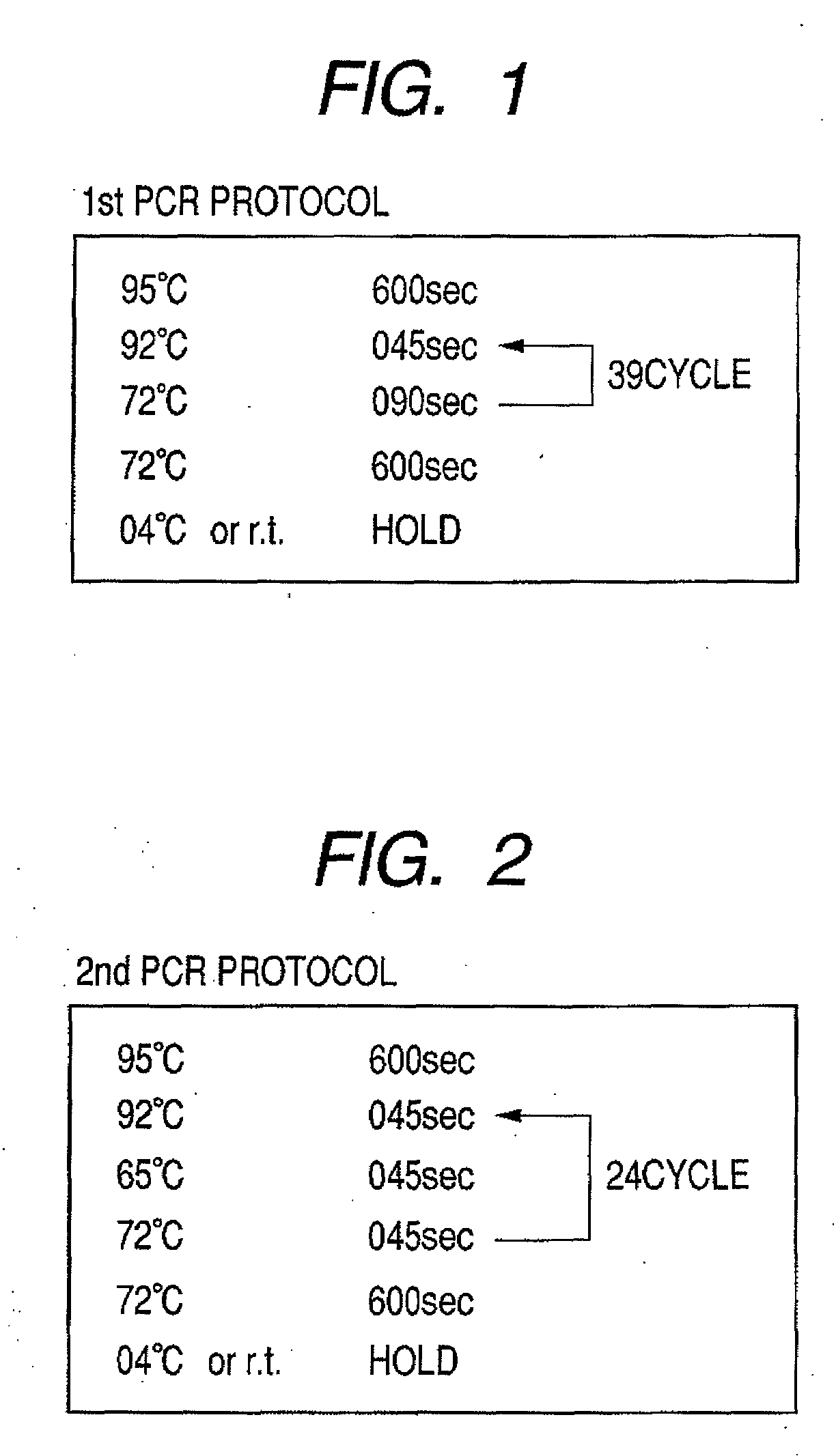Probe, probe set, probe-immobilized carrier, and genetic testing method
- Summary
- Abstract
- Description
- Claims
- Application Information
AI Technical Summary
Benefits of technology
Problems solved by technology
Method used
Image
Examples
Example
Example 1
[0111]In this example, microorganism detection using 2-step PCR will be described.
1. Preparation of Probe DNA
[0112]Nucleic acid sequences shown in Table 1 were designed as probes to be used for detection of Providencia rettgeri. Specifically, the following probe base sequences were selected from the genome part coding for the 16s rRNA gene of Providencia rettgeri. These probe base sequences were designed such that they could have an extremely high specificity to the bacterium, and a sufficient hybridization sensitivity
could be expected without variance for the respective probe base sequences. The probe base sequences need not always completely match with those shown in Table 1. Probe base sequences having base lengths of 20 to 30, including the probe base sequences shown in Table 1, are also included in the probe base sequence shown in Table 1.
TABLE 1Name ofProbeSEQ IDmicroorganismNo.NO.SequenceProvidenciaPR1355′ CCTGGGAATGGCATCTAAGACTGGTCA 3′rettgeriPR2365′ GAGGAAGGCGTTGAT...
Example
[0213]Using the DNA chip prepared in Example 2, detection was attempted when a plurality of bacterial species was present in an analyte.
[0214]A culture medium in which Providencia rettgeri and Clostridium difficile were cultured was prepared and subjected to the same treatment as that of Example 1 to react with the DNA chip.
[0215]As a result, only the spots of the probes having SEQ ID NOS. 43, 44, 45, 65, 66, and 67 showed high fluorescence intensity, so the coexistence of those bacteria was able to be simultaneously confirmed.
[0216]The present invention is not limited to the above-mentioned embodiments and various changes and modifications can be made within the spirit and scope of the present invention. Therefore to apprise the public of the scope of the present invention, the following claims are made.
[0217]This application claims the benefit of Japanese Patent Application No. 2006-099497, filed Mar. 31, 2006, which is hereby incorporated by reference herein in its entirety.
NUMB...
PUM
 Login to View More
Login to View More Abstract
Description
Claims
Application Information
 Login to View More
Login to View More - R&D
- Intellectual Property
- Life Sciences
- Materials
- Tech Scout
- Unparalleled Data Quality
- Higher Quality Content
- 60% Fewer Hallucinations
Browse by: Latest US Patents, China's latest patents, Technical Efficacy Thesaurus, Application Domain, Technology Topic, Popular Technical Reports.
© 2025 PatSnap. All rights reserved.Legal|Privacy policy|Modern Slavery Act Transparency Statement|Sitemap|About US| Contact US: help@patsnap.com

